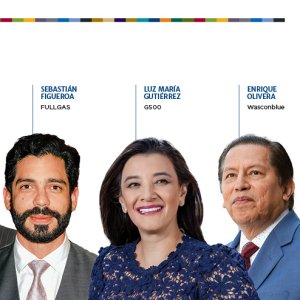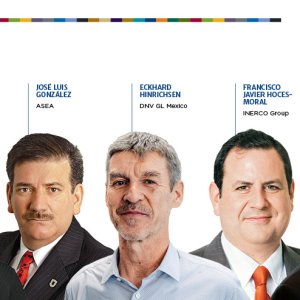
Oil and Gas as a Sustainable Driver for Mexico’s Economy
Unlocked niches, a revamped supply chain, new industry players, national content. These are but a few of the aspects which, added together, can propel Mexico’s economic growth to new heights, Rogelio Garza, Deputy Minister of Industry and Commerce, said in his opening presentation at the Mexico Oil & Gas Summit 2018 on Thursday. Mexico’s strengthened oil and gas industry is called on to conduct this drive, sustained by a bedrock of joint collaboration between the country’s key ministries and Mexico’s private initiative, he told the audience at the Sheraton María Isabel hotel in Mexico City.
Mexico is also poised to board the Industry 4.0 train to fully capitalize on the impact of technological megatrends in industrial processes and the oil and gas industry is no exception, Garza said. The country’s 4.0 Industry Policy was drafted precisely to that end, rooted in four fundamental pillars: human capital, innovation, value chain integration and industry clusters. The policy’s core lies in replicating the success of the country’s automotive and aerospace industries, the former reaching levels of national value chain integration of 40 percent, while the latter trains 4,000 engineers per year, to name a few landmarks. “In 1986, manufactured exports represented 38 percent of total exports, while in 2017 they represented 83 percent. We want this know-how and growth to be mirrored in Mexico’s energy industry,” he added.
A prosperous industry is characterized by an efficient equilibrium between supply and demand, at a moment where Mexico is striving to find the optimal way to connect the bevy of upstream projects sprouting from the licensing rounds to an integrated supply chain with local service companies and technology providers. Here is where the Ministry of Economy comes in. “For the energy industry, the Ministry of Economy has three clear mandates: supplier registry, securing the development of national suppliers and observing compliance with the national content provisions stipulated by the Energy Reform in the licensing round contracts,” Garza said.
Driven by a three-pronged methodology, including regional development, investment attraction and institutional linkage, the Ministry of Economy can locate suppliers and gauge development levels to bring them up to par with the industry’s needs, either with equipment, providing better human capital or improving internal processes on the supply side, while detecting opportunities, integrating requirements and ensuring national content provisions on the demand side. Garza said that national content standards act as a bridge between both sides of the industry.
The Ministry of Economy drafted a national content policy using a calculation methodology to simplify compliance and ensure it is to the benefit of both suppliers and operators. The Deputy Minister of Industry and Commerce highlighted the importance of this requirement, for which the Ministry of Economy regularly organizes workshops. These target operators to allow them to seamlessly integrate national content requirements, as stipulated by law, into their operational processes. For supply to meet demand in the more literal sense, the Ministry of Economy also sets up regular business meetings for both ends to discuss what they offer and what they need. On the demand side, Garza said 1,559 supplier companies are registered, with 953 in hydrocarbons and 606 in the electricity sector. He also shared with the audience the publication of two Industry Standard Guides relating to national content compliance: one for corporate management minimums and another for hydrocarbons technicians. As an additional boost directed toward the industry, the creation of ProEnergía, a MX$1 billion fund to finance viable, supply-chain strengthening projects, has allocated MX$75 million to 29 approved projects in 11 states. “This amount is less than 10 percent of our total fund, so a lot of potential within existing projects remains untapped,” Garza said. The depth of the potential of these projects becomes apparent when considering Mexico’s hydrocarbons sector is ranked 6th in greatest potential unconventional gas resources, 7th in greatest potential unconventional crude oil exploration and 4th in unconventional gas reserves worldwide, according to Garza.














